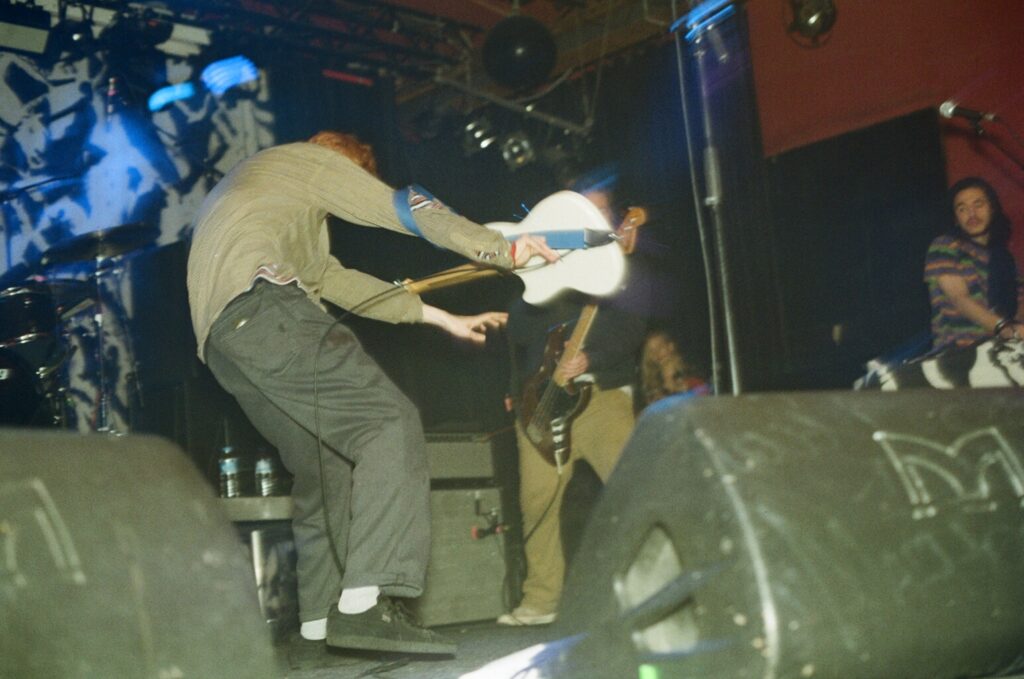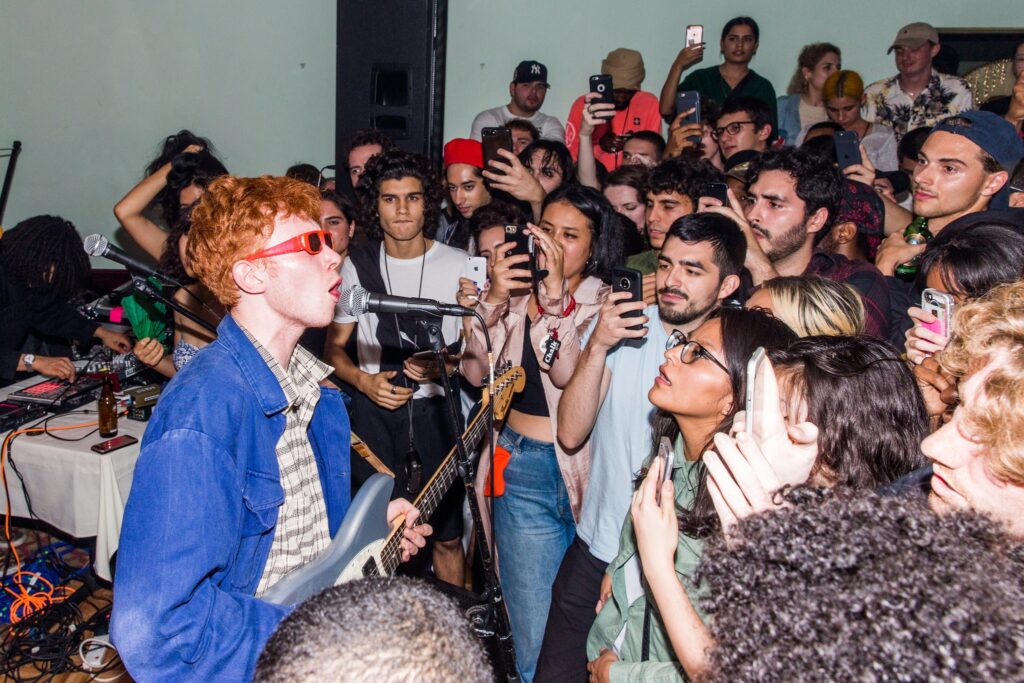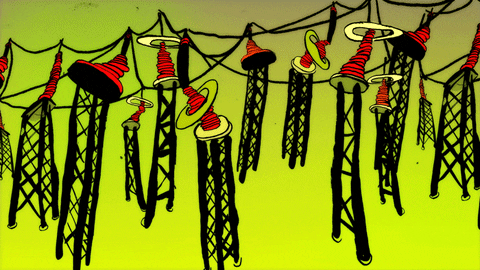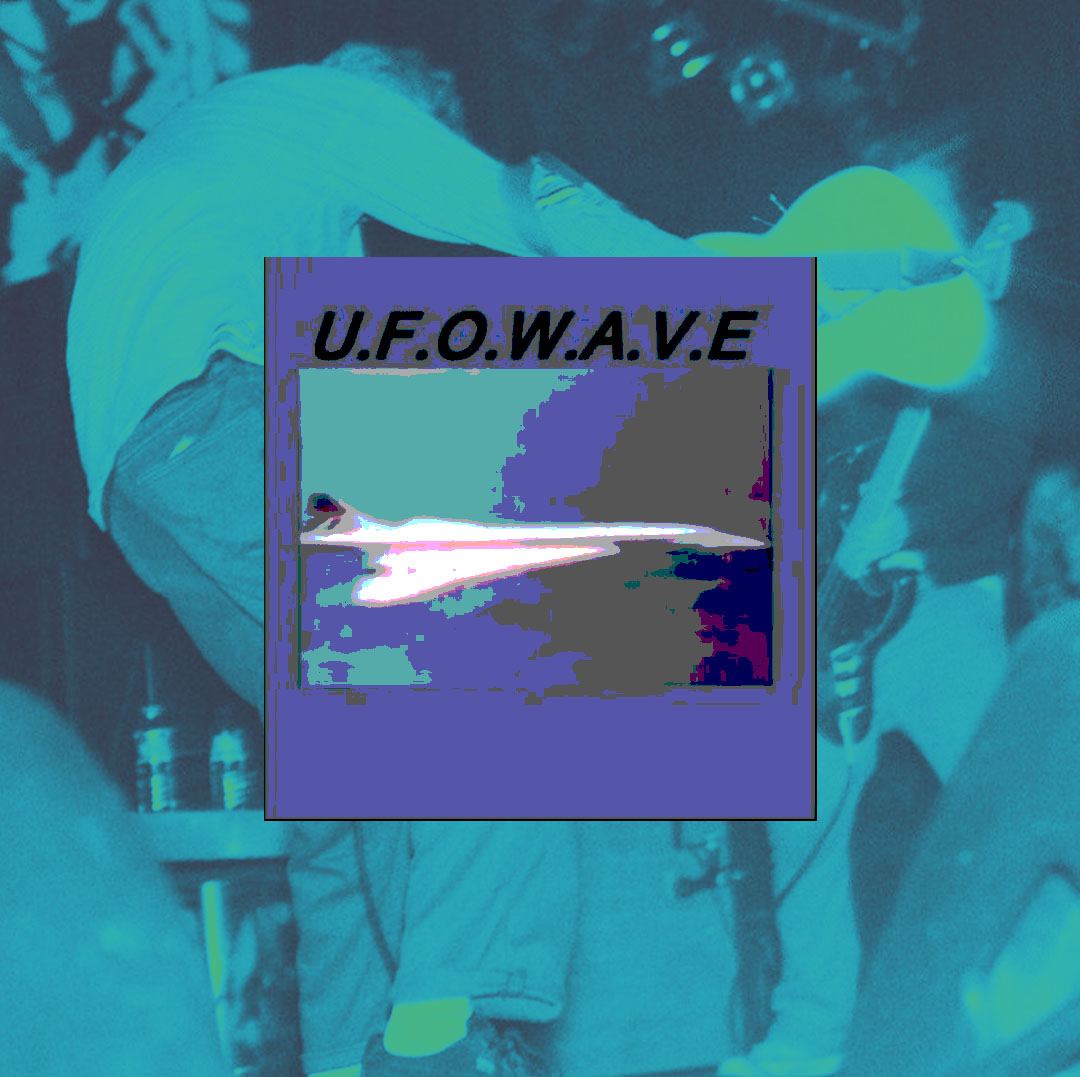CASE STUDY: UFOWAVE
Revisiting King Krule’s debut mixtape unearths a number questions – but that doesn’t mean all of them are meant to be answered.
SAMUEL HYLAND
Does fame make the music better or worse? It’s a loaded question, one that has demanded more and more relevance as pop musicality has expanded in principle – but perhaps more than anything else, it is a matter of who you ask. A closed-minded early 2000s hip-hop apologist who used to love Drake, for instance, may vehemently argue the negative, citing stark differences between the gritty flows of Thank Me Later and the easygoing, Instagram-ready melodies of Scorpion. At the same time, a middle-aged father of two who watched the Red Hot Chili Peppers grow from adolescent rascals who performed nude (save for tube socks on their genitalia) and incited riots, to gray-haired hippies who made introspective music when they weren’t largely staying out of the public eye, may argue the opposite just as fiercely.
For Archy Marshall, the genre-bending UK musician who records music under the moniker King Krule, any variant of such a question is inherently ambiguous. For one, this is because King Krule isn’t the only version of Marshall that has ever existed – it’s seventh in a list of vastly different aliases that includes Zoo Kid, DJ JD Sports, Edgar the Breathtaker, Edgar the Beatmaker, Lankslacks, and The Return of Pimp Shrimp. A more focal point of the ambiguity, yet, is that in place of the focused artistic placings of acts like Drake and the Red Hot Chili Peppers themselves, King Krule exists more as a D-I-Y Frankenstein of his surroundings than a fixated heir to a single-genre throne. As pop music has gravitated towards a rapid need for replacements (“but is she the next _____?” a record label exec may ask before signing off), King Krule has doubled down on the quirk of not fitting into one box – and rather than try to change it, perhaps rebranding himself specifically as a punk rocker, Toro y Moi-esque chillwave torch-carrier, or straightforward bluesman, he instead allows this distinction to be the most sensible difference between his own music and that of peers hailing from the same bustling UK underground. A majority of modern-day staples like Drake got to where they were by seeing holes in their respective industries and setting out to fill them; King Krule sees holes in his corresponding scene and starts wondering how he can dig more.

It is for this reason that listening to King Krule can often be a perplexing experience. It’s incredibly difficult to “get” a King Krule album, let alone on the first listen. In my case, for example, the first time I stumbled upon his name was four years ago, over my first spring break as a high school student: upset because I hadn’t done anything remotely enjoyable by the final few days, I turned to Pitchfork’s ranking of 2017’s top 50 albums in hopes of redeeming myself through music. The Ooz was third, trailing only behind SZA’s Ctrl and Kendrick Lamar’s DAMN. Shuffling through the album underneath cheap overhead headphones, a ninth grade me – who was just getting into J. Cole, Royal Tusk, and the Notorious B.I.G – was not impressed by what seemed to be an endless, sporadic purgatory of dwindling guitar notes, echoing bellows, and sludging musical progression. A year later, yet, on an early-morning road trip to Boston, I gave it another chance. I still didn’t understand it (nor do I fully understand it to this day) – but I did have questions. What is this, rock? Jazz fusion? Punk? The only way to answer those questions was to listen to more of his output. By the end of the break, I had heard everything he recorded up to that point under the King Krule moniker.
Marshall’s latest release, a sprawling 41-minute trek through myriad faces of his musical repertoire, serves as yet one more exhibition of his fluidity. Album opener ‘Cellular’ sees King Krule serving robotic croons about talkative televisions, over Joy Division-esque drum patterns and transcendent electronics. No more than three tracks later, in unapologetic contrast, there are harrowing saxophones spawning from indiscernible haze; the lyrics are shouted, not sung; threatening bass-slash-guitar duos make for an angry soundscape that, at some points, registers as villainistic. But in the complex album-long mix, sounds of life – traffic and street noise for one – manage to noticeably peek through the cracks. Speaking to PAPER in 2020, Marshall declared that he had a particular liking for field recordings. “I was asleep one morning, having this very weird lucid dream, and all of a sudden this group of men came and started playing trumpet right in my face,” he said, contextualizing one instance that made it onto the record. “I woke feeling pretty angry and it turned out that it was the metal of this dustbin truck picking up the bins. It just sounded like these crazy horns. In the dream it was these big dudes just looking at me and playing, it was really intense, but it was the arms, or the girders, of the truck rubbing against it.” Where one would imagine the typical explanation for a freakish horn section to be a music theory-founded mini-lecture on brass instrumentation, King Krule’s rationale is a dream about garbage trucks turned boisterous trumpeteers.
“King Krule’s ability to thrive in both the London underground, and the vibrant nightlife of New York City, stems widely from his choice to serve as an amalgam rather than a cookie-cutter fit for an established categorical makeup.”

This exudes an elasticity typical of Marshall: he doesn’t care as much about the stringent musicology – though he evidently knows it very well – as he does actually making the music. Marshall spent a majority of his childhood in South London, with two arts-leaning parents (his mother, a costume designer; his father, an art director) and an equally creative older brother, J.G, who currently plays a major hand in art direction for King Krule albums. The music of the London underground through his youth was a murky concoction of shout-rap, trip-jazz, and post-punk, dancing along the outskirts of a more contemporary rock revival fronted by upstart acts like Arctic Monkeys and Coldplay. A majority of Marshall’s earliest semi-professional recordings blur these lines. In one amateur music video from 2012, he spits (as Zoo Kid) optimistic pick-me-up bars alongside the UK mainstay Rago Foot, over a reggae-reminiscent backing of reverbed guitars and ambient drum machines. Another project, a 2013 loosie called ‘4:44’ released under his Edgar the Beatmaker alias, sees Marshall croon over electronically rendered brass sections, jazz instrumentation seamlessly coexisting with its MPC-stemmed tech successor. It isn’t strictly any of the genres it contains, but at the same time, it’s all of them at once.
King Krule, the current face of Marshall’s expansive artistry, emerged onto the airwaves with 2013’s proper studio debut 6 Feet Beneath the Moon. It quickly solidified his stature as a darling of indie scenes in search of a new champion, scoring lofty reviews from Pitchfork and the Guardian all the while granting him a devoted following of young people who saw something familiar in his angst. It was raw and intimate, skillfully treading the tightrope between cutthroat devastation and empathetic resonance. One song I constantly go back to is ‘Has This Hit,’ a short number buried nine tracks into the full-length. It opens with a playful repetition of the mantra “I just want you to know.” For about a minute or so, Marshall sings over its melodic footprint, strumming serene guitar arpeggiations to accompany his bellow. By the track’s end, though, over the same tranquil backdrop, a hysterical woman is heard violently screaming about an unspecified horror. There is something haunting about the duality of it all – The singer of the opening mantra seemed to be a young child, shrouded in innocence – but as the song fades, there is the subtle hint that an opposite of such innocence has vacuumed any and all purity to a point of no return.
“King Krule, though, hasn’t found out yet. And it doesn’t seem as if he intends to anytime soon.”
The Ooz (2017) – my formal introduction to his output – made a dynamic, haunting brew of the already-versed structural catalog Marshall offered with his earlier work. It doubled down on the enigmatic sense his music was known to conjure, now presenting a newer, more refined image of his mélange for listeners to make sense of. There were tracks like the high-energy ‘Emergency Blimp,’ that bred post-punk jams from jagged strings and volatile drum patterns. Other songs, like the aggressive ‘Half Man Half Shark,’ offered deep, thematic treks that went from loudly erratic to soothingly transcendental, at the same time bridging opposite ends of its creators own universal breadth. The Ooz also doubled down in the sense of reception: whereas 6 Feet Beneath the Moon was more generally bolstered by indie heads and corresponding upstart blogs, The Ooz was crowned ‘Best New Music’ by Pitchfork – and, yes, given an impressive third place ranking in its top 50 albums for that year. (Among the albums it beat for the spot were Tyler, the Creator’s Flower Boy, Jay-Z’s 4:44, and Vince Staples’ The Big Fish Theory).
In a 2018 profile, Marshall told the New Yorker journalist Matthew Trammell that he was happy to see Willow Smith cover ‘Easy Easy,’ one of the more popular songs on The Ooz’s predecessor. “I used to watch that girl’s dad every day when I was young,” he said. “Her voice is so much more bearable than mine. There’s a line in that song where it’s talking about Tesco’s, which is a British supermarket. And she says the line. Damn, I got her talking about a British supermarket! That’s pretty cool. It humbled me, in a way.”
It speaks a lot to how Archy Marshall’s flaccidity can be, at times, just as much cultural as it is musical. On his first tour stop in New York, a string of 2011 performances at the now-defunct CMJ Music Marathon, he was confronted with a brash opposite of the raucous crowds he grew accustomed to in London’s underground scene: audiences were filled with people staring at their cell phones. (“I thought I was never gonna come back here again,” he mused in the aforementioned interview). A decade later, as it stands, before he had to cancel his Man Alive! tour due to concerns around COVID-19, his shows garnered an eclectic reputation in the same exact city for their feats of hyperactive engagement. The music video for ‘Half Man Half Shark’ features compiled footage from a live show in NYC – beneath disco balls and dim overhead lights, there is crowd-surfing being attempted amidst ubiquitous jostling. Of the few cell phones that are present, none are pointed at the floor. They’re all pointed up at him.
King Krule’s ability to thrive in both the London underground, and the vibrant nightlife of New York City, stems widely from his choice to serve as an amalgam rather than a cookie-cutter fit for an established categorical makeup. It’s a quality that allows for other unique faces of his musicianship to shine more brightly through the surface. “Someone like King Krule studied music at the BRIT School and studied jazz,” Trammell told Sammy’s World in an email last year. “But we know him most uniquely for his singing voice. Your voice is more of your ‘face’ as an artist today than it might have been back in the beginning of LPs, where the majority of the buying public were buying records really as home products as opposed to following an artist.”
Before Archy Marshall was captivating international audiences with his deathly howl, or garnering mass dedicated followings of teen-aged devotees, he was Zoo Kid, a scrawny 16 year-old who had just begun fiddling with an eight-track recorder in conjunction with the electric guitar. The 2010 compilation album U.F.O.W.A.V.E exists as – if not the only one – the most raw, in some places telling, set of bedroom recordings from this primitive era. Encased within it are early versions of ‘Out Getting Ribs,’ ‘Ocean Bed,’ ‘Baby Blue,’ ‘A Lizard State,’ and the harrowingly raw aforementioned number ‘Has This Hit.’ The only two other tracks, ‘The Wake’ and ‘Greyscale,’ are equally amateur practices in exploration, diving several lengths deeper into a musicianship still trying to find its place in the zeitgeist.
U.F.O.W.A.V.E is not available on streaming services. When I finally listened to it on SoundCloud after an infuriating battle with advertisements on the full-length YouTube bootleg version (update: it has now come to my attention that you can subvert Youtube ads by forwarding to the end of the video and pressing the replay button), I was laying in bed just hours after finding out that I was actively failing Computer Science class. The first thing to strike me was the unapologetic nakedness of its presentation. Again, U.F.O.W.A.V.E was entirely recorded in a bedroom: in place of the captivating electronics of his post-aughts releases, there is an omnipresent emptiness; the most discernible microphone present is the echo of Marshall’s voice off of the four surrounding walls; his unfiltered guitar is piercing and mucronate.

There are a number of sensory differences to the tracks that appear on U.F.O.W.A.V.E, and the versions of those tracks that pop up on subsequent LPs. The distinctions are noticeable – especially if, in tenth grade, you listened to the songs repeatedly until you could understand them (and to this day, you still don’t) – to a point where they jump to the forefront as soon as they scratch the surface. I always enjoyed ‘Has This Hit’ for its dense aura, its chilling vocals, and its death-exuding drum makeup. Today, as I laid in bed, what stood out to me was a seemingly improvised stream-of-consciousness monologue that took shape during the song’s denouement. It’s the same exact winding spiel that closes out the official studio version. But this time, without production-enhanced ambiences to distract me from its content, I was focused on the words and not the backdrop. “You’re not my pen; you’re not my paper,” Marshall howled, every yelp crumbling into billowing reverberations. “You’re not my heart; you’re its breaker.”
Otherwise unreleased, U.F.O.W.A.V.E’s final two tracks see his ambiguity pushed to limits that seldom get explored in-full on King Krule albums, but undoubtedly represent entire sections of his musical upbringing. ‘The Wave’ opens with a jumpy blues melody that sounds like something straight out of the amplifier of a Telecaster-slinging 1950s folk rock songster. You can hear roots of tracks that would eventually come to fruition in later recordings – perhaps in the jazzy chords of ‘Midnight 01 (Deep Sea Diver),’ or in the easygoing jive of Man Alive’s ‘Underclass.’ A direct mirror to what his music does a decade later, yet, a song like ‘Greyscale’ takes whatever category the previous track may have led you to apply to Marshall, and buries it beneath heaps of new variety: happiness may take over melancholy for a brief moment. Flashes of dance music may override countrypolitan string assemblages. Some hopelessly loose ends may only be tied together by the singer’s familiar rasp.
What was Archy Marshall supposed to become in the first place? In most cases, this is a feature decided strictly by either the artists themselves, or pushy label execs with a business plan in one hand and a stack of cash in the other.
Whether being ranked a top ten album of the year by Pitchfork, or strumming away at a guitar alone in his bedroom, some things with Marshall don’t change. Just like the first time I gave his music a chance, on that early-morning road trip to Boston, I didn’t come out of U.F.O.W.A.V.E with understanding – I came out of it with questions. Of all the category-centric inquiries that whizzed back and forth in my mind, the one that buzzed loudest was familiar: does fame make the music better or worse?
Archy Marshall has had his share with two vastly opposite ends of the cultural spectrum. As an adolescent in the streets of Southeast London, for one, he made a criminal hobby for himself vandalizing local walls with similarly-minded associates – sometimes narrowly evading deep trouble with law enforcement upon getting caught. Music was a side-hustle before it was a full-fledged career, and even when he did decide to pursue it as his primary creative focus, it was still a matter of clawing uphill. “When I was real young, and I wasn’t getting any recognition—my friends probably won’t admit to this—but I would be going about trying to sell my tapes, trying to get them down to gigs, and maybe one of them would turn up,” he told the New Yorker. “I was playing these gigs every weekend to empty pubs, and it was my passion, man. And, I don’t know, my music got better and better.”
After several years of living exclusively by this lifestyle, though, the music did get better. In the span of two major releases, he found himself going from begging for people to turn up at his shows, to begging for “tiny, packed audience(s) to take two steps back from the stage.” (New Yorker). He wasn’t pleading for everyday passersby to consider buying his tapes; they were pleading for him to consider re-stocking. The latest scheduled replacement to the empty pubs he frequented a decade ago was a lengthy, much-anticipated international tour in support of his latest release, with venues including O2 Academy Brixton, the Hammerstein Ballroom at Manhattan Center, and the Primavera Sound Festival in Barcelona.

For a great deal of modern-day artists who continue in the legacies of their categorical predecessors, it is easy to make any judgment, whether right or wrong, as to whether newfound fame has impacted musical output. Because the music is straightforward itself, by nature, so becomes any response such a question may call for. Playboi Carti, for instance, rose up underneath the collective wing of Awful Records, the Atlanta hip-hop collective that sought to represent the next chapter in the city’s storied musical history. As his reputation festered, so did his ambition – he branched out to partner with New York City’s A$AP Mob, gradually altered his exterior, and, years later, fully embraced emo punk both sonically and aesthetically. It becomes easy to declare whether fame made his music better or worse, because the formula already exists – what he was ‘supposed’ to become + what he actually became = ??? – and all it comes down to is who you ask.
But, for King Krule, the question is delegitimized before it can leave the mouth. What was Archy Marshall supposed to become in the first place? In most cases, this is a feature decided strictly by either the artists themselves, or pushy label execs with a business plan in one hand and a stack of cash in the other. King Krule, though, hasn’t found out yet. And it doesn’t seem as if he intends to anytime soon. In a sea of acts who unrelentingly push forth sturdy studio archetypes, manufactured or natural, it’s a rare distinction that makes the music just as unforgettable as it is undefined.


One reply on “UFOWAVE”
wow I was def supposed 2 read this today… I remember hearing Baby Blue in hs and falling in love with his sound